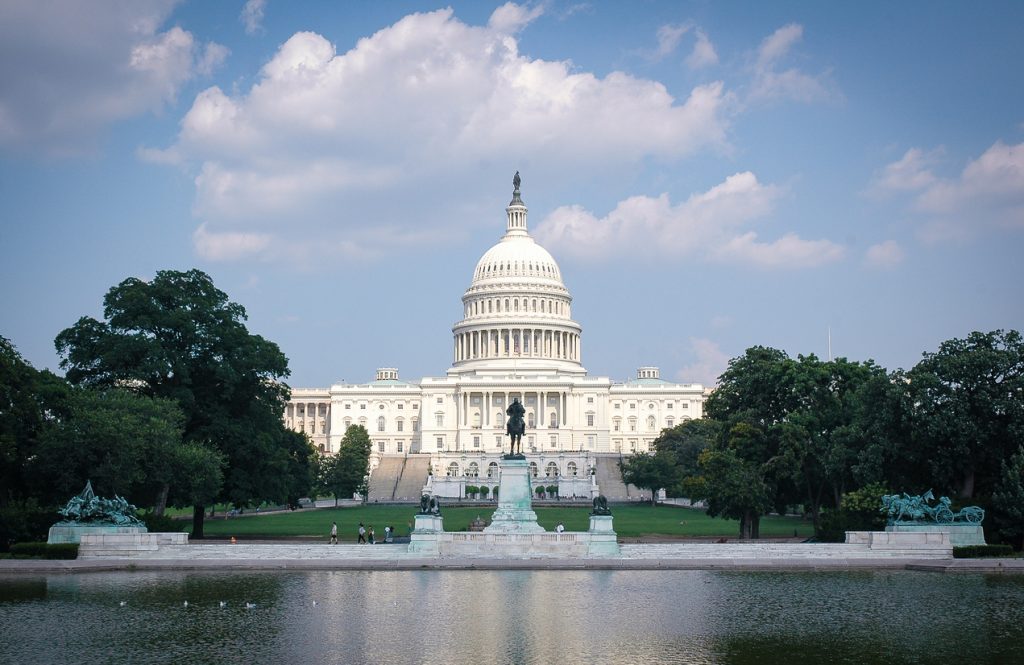The looming threat of a government shutdown means agencies are once again reviewing contingency plans — in the event that lawmakers don’t pass a spending bill by midnight.
On Thursday night, House Republicans passed legislation to maintain current funding levels for federal operations through Feb. 16 and avert a shutdown, but Democrats in the Senate have threatened to block the short-term spending bill. Even some Republicans have said they would not support the House bill. The uncertainty continues to fuel fears that a government shutdown — regardless of how short — is increasingly likely.
The House’s Continuing Resolution, or CR, includes language to extend the Children’s Health Insurance Program (CHIP) for six years but does not include a path forward for the Deferred Action for Childhood Arrivals (DACA) program, which among other things protects some immigrants brought to the U.S. illegally as children from being deported and makes them eligible for a renewable work permit.
The on-again, off-again threat of a shutdown has become the new normal for feds, who have been operating under a continuing resolution for months. The current short-term spending bill is set to expire on Jan. 19 at midnight.
In a tweet Thursday, Senate Minority Leader Chuck Schumer (D-N.Y.) said, “I support an idea floated by my @SenateGOP colleagues: pass a clean CR for a few days to give us a hard, final deadline & keep both sides at the table. We’ll reach a deal that fully funds our military & the opioid fight, CHIP, vets, pensions, disaster aid & protects Dreamers.”
How this all plays out is yet to be seen. And although there’s sure to be a lot of political back and forth leading up to the midnight deadline, we’ll stick to the key issues that all feds should know leading up to a possible shutdown.
1. Your office needs to plan for this shutdown, but even those plans may change. Until Congress finalizes the stopgap bill, your agency needs to keep planning for a government shutdown. While many who work at your office will have experienced the 2013 government shutdown, there are likely new people on staff. They’ll need guidance on how a shutdown could affect their jobs, pay and benefits. Even staff who persevered through the previous shutdown will need reminders about what to expect.
However, keep in mind that even the best plans can change. For example, during the 2013 shutdown, mailroom employees at the National Institutes of Health were initially furloughed. But NIH realized that some mailroom employees were needed to pick up mail, including bills that needed to be paid to keep the facilities minimally operational. NIH brought some mailroom employees back to work as a result.
2. If you haven’t already, familiarize yourself with your agency’s contingency plan. These plans detail what operations your agency will continue to perform in the event of a shutdown, as well as the types of employees who will be furloughed (given a temporary leave of absence). Agency plans also explain what’s expected of both furloughed employees and those not furloughed, and how staff and the public will be notified about changes to agency operations.
3. Make sure your contact information is up to date, in case your manager needs to contact you during a shutdown. At the very least, employees would need to be notified about resuming operations after the furlough ended.
4. Review any travel plans with your manager. Employees with work trips scheduled should coordinate with their supervisors on how to proceed in the event of a shutdown.
5. Beware of the Antideficiency Act. One of the key issues agencies must weigh during a shutdown is what programs and activities they are permitted or required to continue. “Except in certain circumstances when continued activities are authorized by law, the Antideficiency Act generally restricts agencies from continuing operations funded by annual appropriations during a government shutdown,” according to a 2014 Government Accountability Office report. But there are exceptions, including activities funded with appropriations that do not expire at the end of the fiscal year.
